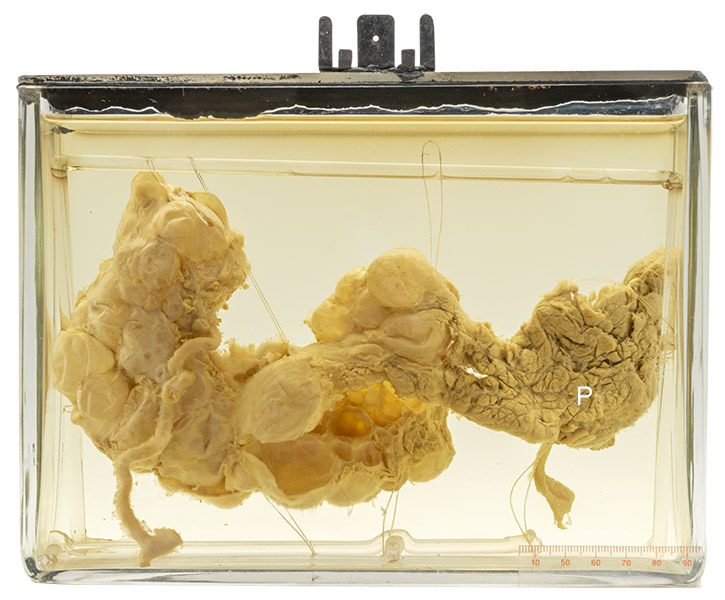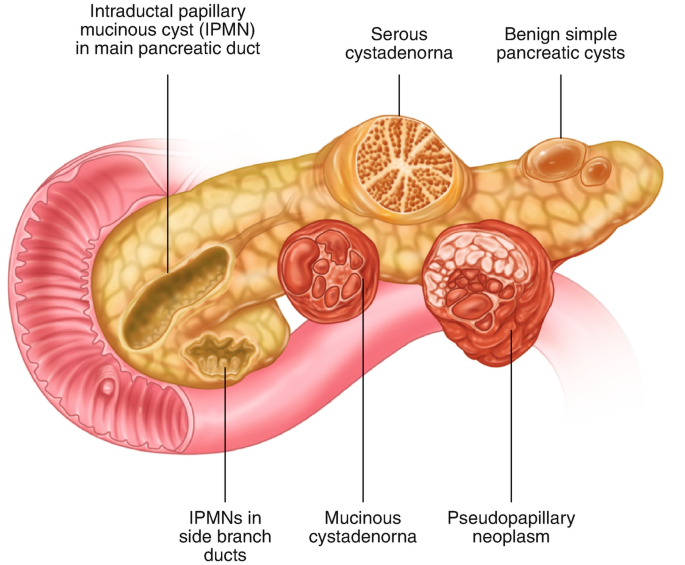

Age/sex: unknown
Size: 17.1 x 22.6 x 8.8 cm
The head and body of this pancreas (P) are normal. The tail has been replaced by a multicystic mass measuring 15 cm in greatest dimension. The cysts vary in size, some being as large as 3 cm in diameter.
Congenital cysts
There are several types of pancreatic cyst, each with its own pathologic appearance and clinical associations. This specimen was an incidental finding at autopsy, the person dying of endocarditis and pulmonary thromboembolism. Although labelled “congenital”, it is more likely to be a benign neoplasm (serous cystadenoma). This impression is supported by the description of the histologic appearance given in the museum logbook: “some cysts lined by columnar and others by flat epithelium.” The neoplasm is similar to the one shown in Specimen 58, except that the cysts are larger in size.
True congenital cysts of the pancreas are very uncommon and are often solitary. Multiple “congenital” simple cysts are sometimes associated with cysts in other organs, such as the liver and kidney in polycystic renal disease (see Specimen 24). Some benign cysts, such as the mucinous type, can transform into a malignant tumor.
Below: Different types of pancreatic cysts.
Source: Illustration of different cyst types in the pancreas. From “Pancreatic cyst lesions and risk of cancer,” by JR Aunan, MS Al-Saiddi, B Stuchfield, et al. (2021). Textbook of Pancreatic Cancer, 777-797.
